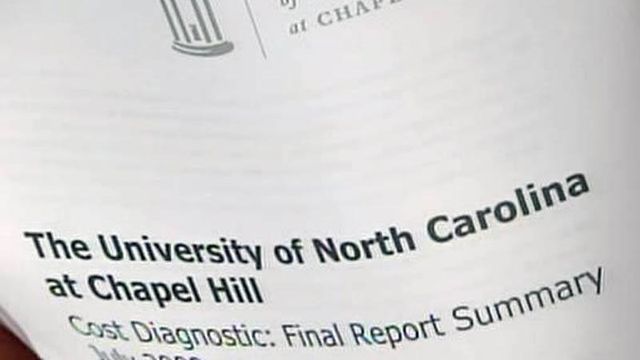UNC board vows to cut bureaucracy
UNC-Chapel Hill officials said Thursday that they are committed to cutting overhead costs after an outside consultant found the university's administrative structure to be unwieldy.
Posted — UpdatedAn anonymous donor paid for a study by Bain & Co. to help UNC find ways to streamline operations and be more effective.
Changes in the administrative organizational structure could save the university up to $12 million annually, the report said.
"I think this report is probably par for the course in higher education," said Bob Winston, who was elected Thursday as chairman of the trustees. "Obviously, there are some areas that we need to change in the way that we run the university. We are going to do that, and we are in the process of doing that now."
UNC Chancellor Holden Thorp agreed that officials wouldn't simply review the report and file it away. Some of the suggestions already have been implemented, he said, such as adjusting temperatures in campus buildings to save on utility costs.
Personnel changes will come more slowly, though.
"We certainly are going to work to get rid of those layers," Thorp said. "We'll be announcing changes over the next few months and then over the next few years that will allow us to do that."
Sim Sitkin, a professor of management at Duke University's Fuqua School of Business, said UNC's situation is common in corporations as well as education and government. Organizations often create managerial positions as a way to give top employees a raise, he said.
"It's not unique at all," Sitkin said. "What typically happens is things grow in response to a problem, but it's very hard to get them to shrink once the problem goes away or the problem shifts."
Reform is possible, he said, with a lot of hard work and some pain, but a large number of layoffs might not be needed.
"Often, most of those resources can be reallocated because there is a lot of work that's not being done," he said. "Typically, people don't want do it unless there is a real pressing reason."
Thorp said the timing of the study was fortunate because UNC was already looking for ways to cut spending to adjust to the tight state budget.
Bain & Co. analysts will return sometime next year to follow up on UNC’s progress.
"You are six to 12 months ahead of most of your peers in really recognizing and beginning to deal with some of the issues," said Rich Allison, a partner in the Boston-based consulting company.
Other campuses in the UNC system also are looking at the report to see if they could also benefit from the recommendations.
• Credits
Copyright 2024 by Capitol Broadcasting Company. All rights reserved. This material may not be published, broadcast, rewritten or redistributed.






